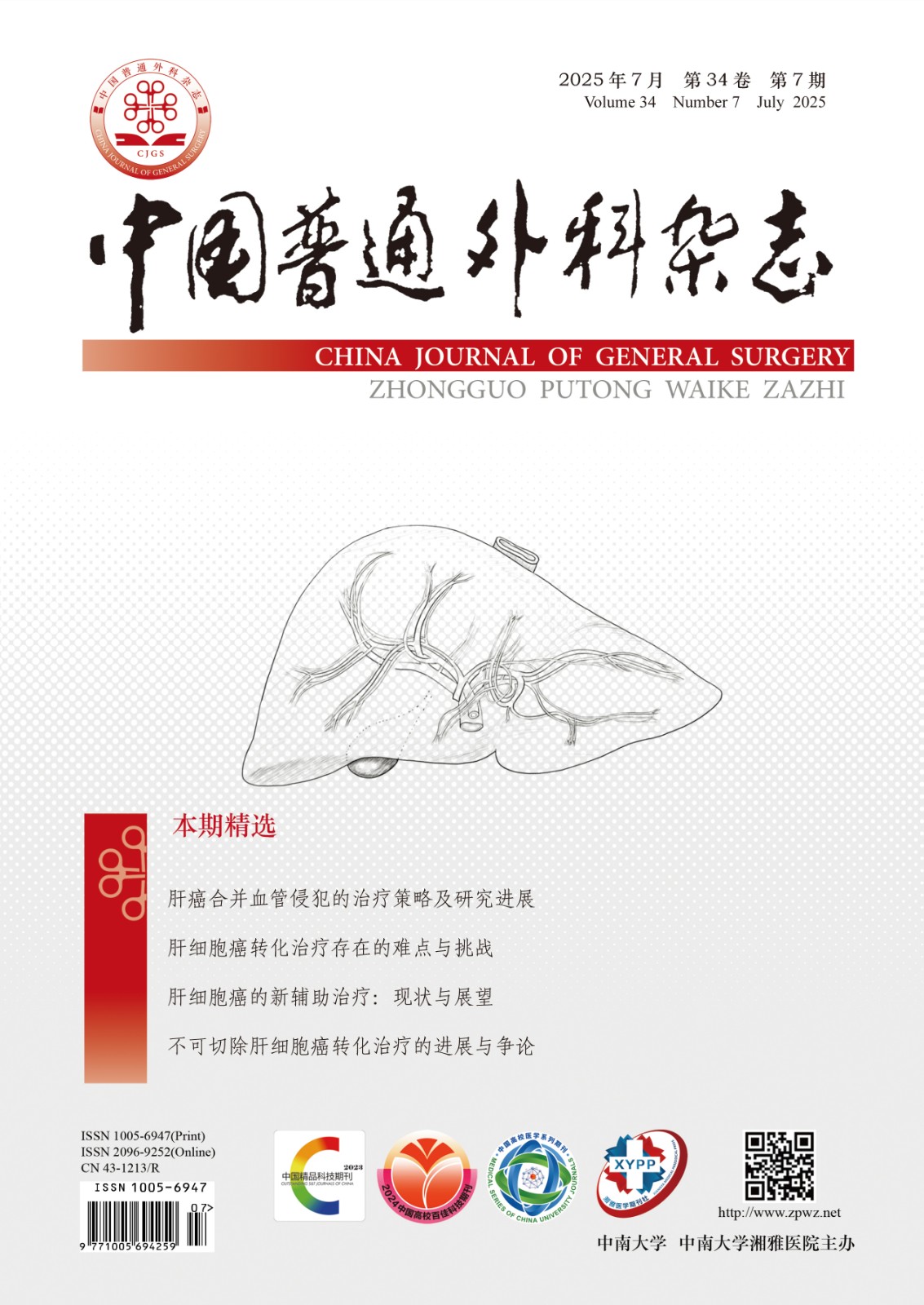Abstract:
Objective:To explore the indications and attention points in one-stage thyroidectomy and bilateral neck dissection for thyroid carcinoma.
Methods:The clinical and pathological data of 68 thyroid carcinoma patients treated with one-stage thyroidectomy and bilateral neck dissection from Jan 1990 to Dec 2005 were reviewed retrospectively.
Results:There was no operative death in this series. Of the 68 patients, 60 had bilateral and 4 had unilateral positive lymph nodes; 4 had negative lymph nodes. The metastatic rate of patients who had unilateral thyroid cancer with contralateral cervical enlarged lymph nodes, bilateral thyroid cancer with unilateral cervical lymph nodes and isthmus cancer with lymph nodes was 100%(7/7), 90%(9/10) and 66.67%(4/6) respectively. Postoperative complications include 7 cases of facial and flap edema, 2 headache, 5 postoperative hoarseness, 7 temporary hypoparathyroidism, 1 permanent hypoparathyroidism, 1 left chylus fistula, and 3 unilateral accessory nerve injury.
Conclusions:The patients with unilateral thyroid cancer and enlarged contralateral neck lymph nodes, with bilateral thyroid cancer and unilateral cervical lymph nodes, and with isthmus cancer and enlarged lymph nodes are high-risk patient of bilateral neck metastasis, and should be treated with one stage thyroidectomy and bilateral cervical lymph node dissection. The procedure is safe, no serious postoperative complications occurred, and the survival rate and life quality can be improved.

